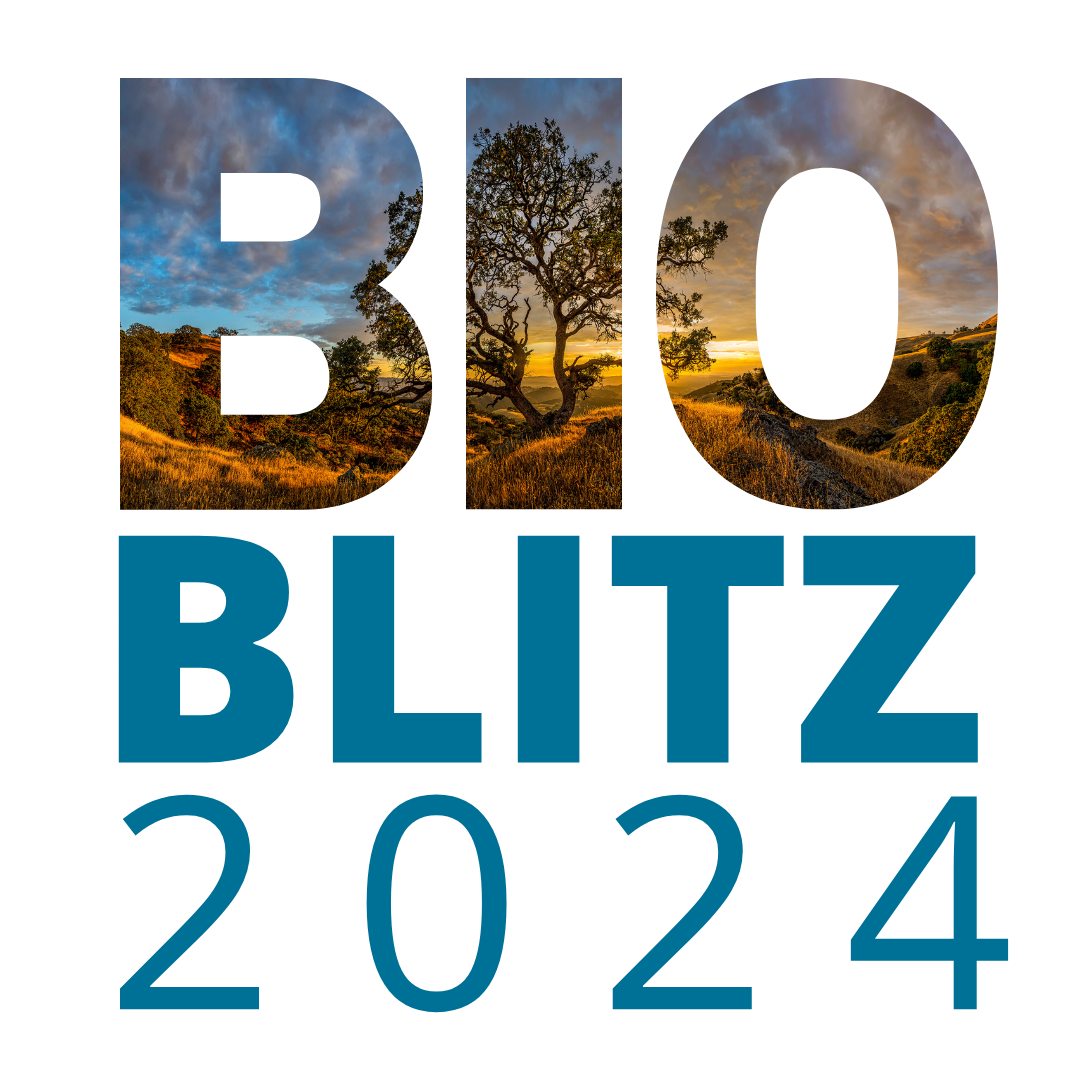Ever wondered what kind of plants and animals pop up after a big fire? Want to explore your local parks in more depth and learn about the kinds of things that live there?
Do you enjoy taking pictures? Want to become a citizen scientist and contribute data to research? Then Save Mount Diablo’s BioBlitz is perfect for you! Check out where we’re exploring this year.
 What Is a BioBlitz?
What Is a BioBlitz?
In short, a BioBlitz is a resource survey—a race against time to see how many species of plants, animals, fungi, and other organisms can be accounted for in a specific geographic area.
BioBlitz events bring together scientists, naturalists, volunteers, and other community members to document the spectrum of wildlife present in our community, contributing to an improved understanding of local natural resources.
A time-limited event, Save Mount Diablo’s BioBlitz provides a snapshot of biodiversity. It helps to establish important baseline information on species, which often guides stewardship and land management decisions.
For example, the event has resulted in
- rerouting a trail away from newly discovered rare plants,
- targeting non-native weeds in sensitive resource areas, and
- contributing rare wildlife occurrence records to regional databases, thereby affecting development proposals.
Cataloging the species found will update past records and provide an ecological snapshot of each BioBlitz site for agency staff.
In the time of climate change, these efforts help establish baselines by which change can be measured. Our investigation will also provide insight into species that may need continued monitoring or directed management in the future.
Socially and Environmentally Responsible BioBlitz
We ask participants to please naturalize from the road or sites with open public access and to not trespass on private property. We strongly encourage participants to follow Leave No Trace principles by staying on the trail and not collecting any organic materials.
We have a few goals for the BioBlitz:
- Monitor the biodiversity in different habitats by noting what kinds of things grow in the Diablo Range. We take note of plants, animals, fungi, and many other living things.
- Explore more of the Diablo Range. There is currently very little known about the Diablo Range, and this BioBlitz gives us a great opportunity to visit more sites in the range.
- Encourage people to get outside and join in community science efforts!
Who Can Join?
Citizen scientists of all ages can join! No special skills are necessary. All you need is
- A smartphone device or camera
- The iNaturalist app downloaded onto your phone (it’s free!)
- Weather-appropriate clothing
- Water, snacks, and a full tank of gas or a fully charged battery. (Please note that there are limited/no services in many of these locations)
Help us document our biodiversity! Take photos of plants, animals, fungi, and other organisms within the two-week period and upload them onto iNaturalist.
It’s OK if you don’t know what kind of specimen it is; there are many experts on iNaturalist who can help you identify what you’ve found.
There is no time commitment for this event, so take as many photos as you want and upload them any time of day within the two weeks.
Where to Catalog Your Observations
We’re asking that all BioBlitz participants upload their observations onto this project on iNaturalist.
We also highly recommend signing up for their mailing list to receive vital safety information, iNaturalist project challenges (and prizes!), goal updates, and more.
How to Get Started
- View the iNaturalist training videos here.
- Visit any of the sites with open public access up and down the Diablo Range on our study areas page.
- Observe! Head outdoors and take photos of plants, animals, and fungi.
- Identify: Identification can be as simple as “bird” or “bee” or as complicated as “sky lupine (Lupinus nanus).”
- Share! Upload your photos onto iNaturalist. You can attempt to identify what is in your photos, and an expert will confirm or make identification suggestions. Share on social media as well! Use #SaveMountDiablo #BioBlitz

